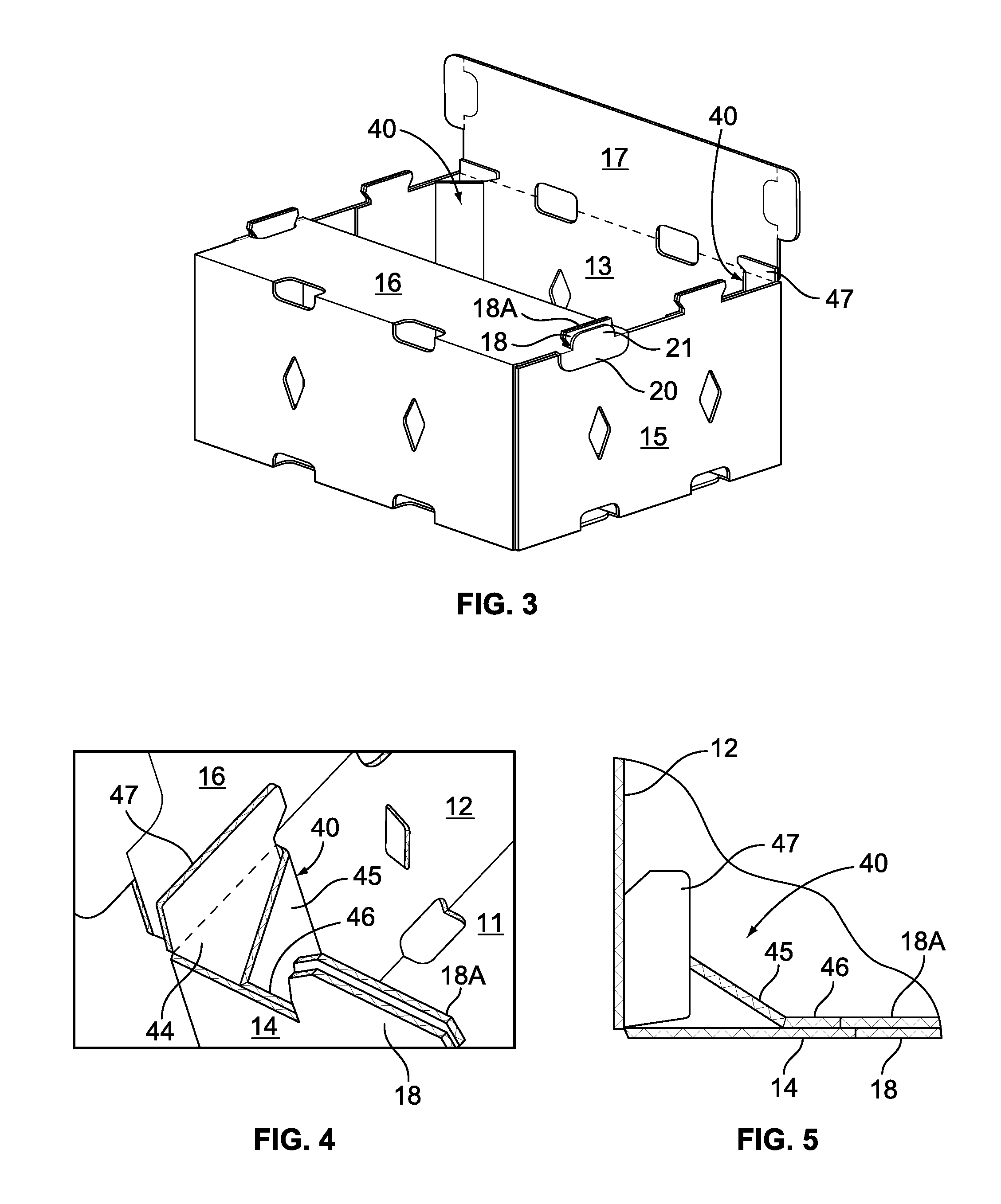Container with inclined walls, stacking tabs and reinforced corners
a technology of inclined walls and containers, applied in the field of containers, to achieve the effect of increasing stacking strength and less inventory
- Summary
- Abstract
- Description
- Claims
- Application Information
AI Technical Summary
Benefits of technology
Problems solved by technology
Method used
Image
Examples
second embodiment
[0041]container 50 and blank B2 for making the container are shown in FIGS. 14 and 15. This form of the invention is essentially identical to the first form described, except that vent openings 51 are provided in the lid panels 16′, 17′, the bendable flaps 27 are omitted from the cut-outs 26, and slight depressions 52 are formed in the upper edges of the end walls 14 and 15 at opposite side edges of the stacking tabs 18.
third embodiment
[0042]container 60 is shown in FIGS. 16 and 17. This form of the invention differs from the previous forms primarily in that the reinforcing corner post does not extend diagonally but instead panel 45′ lies against the adjacent side wall, and the corner post pads 47 are omitted. However, the third panel 46′ extends over nearly half the width of the associated end wall. Further, there are no vent openings in the end walls 14′, 15′ or lid panels 16′, 17′.
PUM
 Login to View More
Login to View More Abstract
Description
Claims
Application Information
 Login to View More
Login to View More - R&D
- Intellectual Property
- Life Sciences
- Materials
- Tech Scout
- Unparalleled Data Quality
- Higher Quality Content
- 60% Fewer Hallucinations
Browse by: Latest US Patents, China's latest patents, Technical Efficacy Thesaurus, Application Domain, Technology Topic, Popular Technical Reports.
© 2025 PatSnap. All rights reserved.Legal|Privacy policy|Modern Slavery Act Transparency Statement|Sitemap|About US| Contact US: help@patsnap.com



